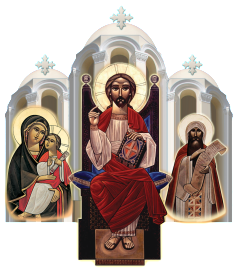1st Tout 1742 A.M., September 11th 2025
The Feast of Nayrouz holds a place of great importance in the Coptic Church, serving as the crown of the Coptic liturgical year. The term Nayrouz (also spelled Nerooz) originates from the Persian language, meaning “the New Day.” It became associated with the Coptic New Year following the period of Persian rule in Egypt between 525 and 405 BC.
Although it is commonly referred to today as the “Feast of the Martyrs,” this title is not explicitly found in the Church’s early liturgical or historical writings. Rather, the true significance of Nayrouz lies in its function as marking the beginning of the liturgical year.
The connection to the martyrs may come from the fact that Nayrouz marks the first day of the Coptic calendar, which is dated “Anno Martyrum” (A.M.), meaning “the Year of the Martyrs.” Similar to how A.D. (“Anno Domini”) or B.C. is used in the Gregorian calendar, this title marks the beginning of a new Christian era centered on the witness (μαρτυρία – martyria) of the martyrs. The calendar begins in the year 284 A.D., when Emperor Diocletian came to power and began one of the most intense persecutions in Christian history.
Although we don’t know exactly when the Feast of Nayrouz was added to the Church calendar, we do know that during the Fatimid dynasty (969–1171 AD), it was already one of four major feasts celebrated in the Coptic Church, along with Covenant Thursday, the Nativity, and the Epiphany.
Building on the historical context and the rich liturgical tradition of the Feast of Nayrouz, we come to understand that the central theme of this feast is not solely martyrdom, but more importantly, renewal. While the martyrs are historically woven into the memory of this day through the Coptic tradition, the liturgical focus of Nayrouz invites us to begin anew, to be transformed in Christ, to become a new creation. Of course, one might argue that renewal and martyrdom are ultimately connected, as martyrdom itself is the ultimate renewal of one’s life in Christ through death to the world.
The theme of renewal is clearly present throughout the readings for the Feast of Nayrouz. In the Pauline Epistle, Saint Paul teaches us about the transformation that comes through life in Christ. He writes, “If anyone is in Christ, he is a new creation; old things have passed away; behold, all things have become new. Now all things are of God, who has reconciled us to Himself through Jesus Christ” (2 Corinthians 5:17–18).
This message is echoed in the Catholic Epistle, where Saint John reminds us that “the darkness is passing away, and the true light is already shining” (1 John 2:8). Together, these verses show us that God invites each of us to be made new.
The reading from the book of Acts also reflects this. We read, “He gives to all life, breath, and all things” and that “He is not far from each one of us; for in Him we live and move and have our being” (Acts 17:25, 27–28). This shows us how close God truly is. He is not distant or far removed from our daily lives. He is the source of everything and is present in every moment, and more importantly, He dwells in us.
The Gospel reading from Luke 4 reveals the source of this renewal. In this passage, Jesus reads from the book of Isaiah and applies the prophecy to Himself: “The Spirit of the LORD is upon Me, because He has anointed Me to preach the gospel to the poor. He has sent Me to heal the brokenhearted, to proclaim liberty to the captives and recovery of sight to the blind; to set at liberty those who are oppressed; to proclaim the acceptable year of the LORD” (Isaiah 61:1–2).
Saint Basil explains that the “Spirit of the Lord” mentioned here refers to the Holy Spirit. The Holy Spirit is the one who renews us. Saint Gregory of Nyssa also speaks about this renewal. He explains that it is not just a change in how we act, but a complete transformation of the soul. He writes:“A new creature he called the indwelling of the Holy Spirit in a pure and blameless soul removed from evil and wickedness and shamefulness. For, when the soul hates sin, it closely unites itself with God… having been transformed in life, it receives the grace of the Spirit to itself, becomes entirely new again and is recreated.”
In this way, the Feast of Nayrouz becomes more than a historical remembrance of the martyrs or a liturgical commemoration. It becomes a day of renewal.
Let us conclude with a short prayer and exhortation from St. John Chrysostom, who urges us to live out this inner transformation:“Let us forget the whole past and, like citizens in a new world, let us reform our lives, and let us consider in our every word and deed the dignity of Him who dwells within us…We ought to live for Christ, not just because we belong to Him, not just because He died for us, and not just because He rose again on our behalf. We ought to live for Him because we have been made into something different. We now have a new life.”
Sources:
- Al-Zaman al-Taqsi Bayna ‘Idi al-Nayrouz wa al-Salib by Hieromonk Athanasius Al-Makary
- Bible, NKJV
- Catena Bible

